We ask you, urgently: don’t scroll past this
Dear readers, Catholic Online was de-platformed by Shopify for our pro-life beliefs. They shut down our Catholic Online, Catholic Online School, Prayer Candles, and Catholic Online Learning Resources—essential faith tools serving over 1.4 million students and millions of families worldwide. Our founders, now in their 70's, just gave their entire life savings to protect this mission. But fewer than 2% of readers donate. If everyone gave just $5, the cost of a coffee, we could rebuild stronger and keep Catholic education free for all. Stand with us in faith. Thank you.Help Now >
Traditions From Around The World

The United States and Canada celebrate in similar fashion.
Christmas trees are decorated and stockings are hung on the fireplace for Santa Claus to fill with gifts. Christmas is celebrated on December 25th, with certain of the French Canadian communities preferring December 24th. Many families celebrate on Christmas Eve with presents, family feasts, and midnight Mass. Cards and gifts are exchanged with friends and relatives. Nativity scenes, once an annual appearance is even small town public squares have now been moved in certain communities to church grounds. In addition to the typically Catholic, and Protestant themed celebrations, there are also massive public celebrations of the Christmas season with non-religious themes. Additionally, in both the US and Canada, the people are known for massive outreaches to the poor and homeless during this Christmas celebration period.
China
The Christians in China light their homes with beautiful paper lanterns during Advent. Santa is called Dun Che Lao Ren. The children are encouraged to hang stockings like their counterparts in the US. Many of the traditions for celebration among the Christian communities in China were imported by the missionaries that delivered the message of Advent.
Belgian
The children in Belgium are always excited by the approaching Christmas season, and they celebrate the primary gift giving early, December 6th. Saint Nicholas, riding a horse, and carrying great bags of gifts, somehow makes the entire journey in one evening, and after gift giving and celebration, the theme of Christmas switches to the Holy celebration of the Christ Child.
Czechs
The Czechs celebrate Christmas by feasting, and gift giving. They also traditionally set a place at the table for the Christ Child. In as much as possible, the extended family celebrates Christmas together.
Denmark
The Danes celebrate the tradition of Saint Nicholas with Santa, known as Julemanden. He arrives as in the US, in a sleigh pulled by reindeer gifts for children of all ages. An additional tradition among the Danish children concerns Santa�s helpers, the Elves. They are encouraged to believe that they may live in the attic of their homes, and actually leave milk and rice pudding for the helpers, to make sure they send the word to Santa.
England
England exported several customs to the United States that we now take for granted in our Christmas Celebrations. Prince Albert imported from Germany the tradition of bringing in a fir tree and decorating it with ornaments and fruits during Queen Victoria�s reign. It quickly spread throughout England, as if the �royals� are doing it, it must be good.
Other imported features of the English Tradition include the making of Christmas lists, the giving of boxed gifts the day after Christmas to visitors, the hanging of stockings by the fireplace, and the general appearance of Santa with bright red robes. One tradition that even many in England now ignore is waiting until late in the day on Christmas to actually open gifts.
Few countries have more caroling groups then the English. The week of Christmas, and particularly the weekend before the actual Christmas day seems to pull every person with the slightest ability to carry a tune into the public square and on walk about singing troops singing the traditional Christmas melodies.
France
The French celebrate Christmas throughout the month of December, with many families actually beginning the gift giving on December 6th, having additional gifts on December 25th, and often opening other gifts on New Years Day, particularly for adults.
Many households have a type of Christmas Eve watch time, and actually celebrate Christmas day right after the stroke of midnight with a meal and celebratory cakes. When the children go to bed, they place their shoes rather than their socks by the fireplace for the receipt of special gifts, and rise early to celebrate Christmas on Christmas day.
Especially among Parisians, the manger scene figurines are dressed in modern French fashion provincial clothing. The preparation and selling of this years manger scene costumes is a big retailing event every year in France.
Italy
The Italians are well known for celebrating Christmas throughout the month of December, by do not actually have the significant exchanging of gifts until the traditional day of the arrival of the Wise Men (January 6th) for the first Christmas family. Italy claims the first nativity scene was actually demonstrated in Italy by Saint Francis as an object lesson for children and today, in nearly every town and village they have regular award as a result of contests the �best nativity scene.� Because of this type of focus, it is said that there are more animals in public squares in Italy during Advent, then perhaps in the rest of the world combined.
India
Only a small percentage of the Indian households celebrate the Christmas faith, and yet decorating for the season seems to permeate even non Christian households in every village. Houses are typically decorated in greenery, mango leaves, strings of light and the �Star of Bethlehem� is hung inside the home. Small personalized gifts are the norm and are exchanged even in non Christian homes.
Mexico and other Central American Countries
Mexicans celebrate Christmas, Navidad for a full nine days leading up to Christmas or Holy Eve. Costumes are the norm, and either in the public squares, or from house to house, families enjoy the theatre of knocking on the door, being turned away as the �Inn is full�, and then moving the party to either the back yard, or the public square. Music is played throughout the celebrations, great regional dishes are served, and the children are given sticks to strike the Pinata, a paper mache creation, often in the shape of a nativity animal, filled with candy, is made of paper mache and filled with all kinds of goodies. On the ninth night they celebrate the Joseph and Mary were welcomed by God, Angels, and shepherds into the Stable, enjoy a great feast, and when completed, the entire family of all ages moves the celebration to the church to celebrate the birth of the Christ Child.
The Netherlands
The traditions of celebration in the Netherlands are a combination of traditions that even address their geography. They celebrate the tradition of Saint Nicholas, known as Sinterklaas, and determined that he originally visited Sweden by boat, setting out on December 6th, the traditional day reserved in the church calendar, from Spain. Once onshore, he immediately mounts a horse, and makes his gift deliveries of candies, nuts, and small hard bread treats to the waiting shoes of children. Old Sinterklaas is a very tricky person, able to appear, whenever he is �accidentally witnessed in the act, as the father or grandfather of the child. Very tricky indeed.
Poland
Poland has a rich tradition of reserving space on the village and city squares for carnival like stalls or booths, called Joselki. The booths are decorated in the themes of Christmas, are celebrated from Christmas Day to New Years day. Families and businesses make special efforts to make their booth the favorite, featuring one of the many scenes from the biblical Christmas story. Small gifts, candy, and Christmas Cards are distributed from the booths to the passer-bys, and normally caroling troops move from booth to booth on Christmas Eve, after which the entire village makes their way to the Church to celebrate late evening Mass.
Spain
The citizens of Spain, largely Catholic, have traditionally celebrated all the great themes of Christmas but the gift giving tradition assumes that Wise men on horseback actually give the gifts to the children in some type of annual reenactment of the first Christmas gift giving. Special care is made to provide food for the horses and treats for the wise men.. They typically celebrate Christmas Eve, Nochebuena, with their families and friends with a meal. Nearly every family will have a Nativity scene, and some are incredibly elaborate. Families move from home to home to see their neighbor�s nativity scene
Sweden
The Swedes have created a number of unique perspectives around the Christmas celebration, not the least of which is referring to their version of Santa, Tomte, as a type of actually unattractive, and some children would say scary gnome, who only appears from out of a barn, or from under a building to deliver gifts. No reindeer here. Instead, the rather diminutive sleigh is drawn by a magic goat, and the gifts, only for the very good children are left sometimes well hidden throughout the house. The packages are typically wrapped in several layers of paper to make the opening of the gift more of an event.
The eldest daughter has the privilege of serving the entire family a special treat on Saint Lucia�s Day, December 13th. She dresses for the part with traditional white robe like dress, special jewelry for headdress, and wakes the family to a very traditional celebratory breakfast of fresh baked buns, and cookies. Later in the same day, the traditional dinner of fish is topped off with Christmas rice pudding.
Russia
The celebration of Christmas in Russia changed dramatically after the Revolution of 1917. Many are not aware that the many traditions of celebrating Christmas observed pre-1917 that were church based were actually made illegal. Long Christmas parades with costume, the star of Bethlehem on poles, and meals celebrated together before attending Christmas Mass after visiting the Nativity scenes in the public squares were all banned.
A different gift giver personality was created, and Saint Nicholas was replaced with Grandfather Frost.
The Russian communities now seem, in a more relaxed post USSR atmosphere to have a mixed theme celebration during the Christmas New Years season. The celebration with decorated tree takes place typically on New Years, and special children�s parties are sponsored by parents, grandparents, and even some churches. Gifts, when delivered come from Grandfather Frost, and his helper, the Snow Maiden.
Switzerland
The Swiss celebrate Christmas as a holy extended celebration, with the spirit of gift giving directed by a character called Christkind, who is a spiritualized present day incarnation of the original Christ Child. Though the gift giving, which all children look forward to, is certainly helped by his assistant Saint Nicholas�s spirit in the form of a brightly dressed helper, the Swiss have been careful to maintain the central figure of the holiday celebration is Christ. Plays, and music fill town squares, and the usually quiet, and somewhat reserved Swiss people get into the spirit of the holiday with living nativity scenes, street side theatre, and general good will flowing from walk by samplings of Christmas fruits, cakes, and cookies.






More Advent & Christmas
Advent & Christmas 2023
Begins Sunday December 3, 2023
Ends on Sunday December 24, 2023
"And the angel answered her, 'The Holy Spirit will come upon you, and the power of the Most High will overshadow you; therefore the child to be born will be called holy—the Son of God.'"
Christ the King
Sunday, November 26, 2023
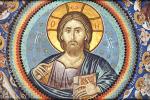 Christ the King Day is a Catholic celebration that takes place on the last Sunday of the liturgical year in the Catholic faith. continue reading
Christ the King Day is a Catholic celebration that takes place on the last Sunday of the liturgical year in the Catholic faith. continue reading
Advent 2023 starts on Sunday December 3, 2023
Advent starts four Sundays before Christmas every year.Immaculate Conception of the Virgin Mary
[holy day of obligation]
Friday December 8, 2023
![Immaculate Conception of the Virgin Mary[holy day of obligation] Image of Immaculate Conception of the Virgin Mary[holy day of obligation]](https://www.catholic.org/files/images/media//14812140994558_150.jpg) Blessed Virgin Mary in the first instance of her conception, by a singular privilege and grace granted by God, in view of the merits of Jesus Christ, ... continue reading
Blessed Virgin Mary in the first instance of her conception, by a singular privilege and grace granted by God, in view of the merits of Jesus Christ, ... continue reading
Advent 2023 ends on Sunday December 24, 2023
Advent ends on Christmas Eve, the day before Christmas, every year.Christmas
Birth of Our Lord Jesus
[holy day of obligation]
Monday December 25, 2023
![ChristmasBirth of Our Lord Jesus[holy day of obligation] Image of ChristmasBirth of Our Lord Jesus[holy day of obligation]](https://www.catholic.org/files/images/media//15226932365_150.jpg) Christmas is an annual festival commemorating the birth of Jesus Christ. continue reading
Christmas is an annual festival commemorating the birth of Jesus Christ. continue reading
The Solemnity of Mary, Mother of God
[holy day of obligation]
Monday January 1, 2023
![The Solemnity of Mary, Mother of God[holy day of obligation] Image of The Solemnity of Mary, Mother of God[holy day of obligation]](https://www.catholic.org/files/images/media/2022/16665677875_150.jpg) The Solemnity of Mary, the Holy Mother of God is a feast day of the Blessed Virgin Mary under the aspect of her motherhood of Jesus Christ. continue reading
The Solemnity of Mary, the Holy Mother of God is a feast day of the Blessed Virgin Mary under the aspect of her motherhood of Jesus Christ. continue reading
Epiphany
Saturday January 6, 2023
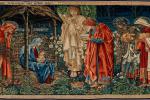 The Epiphany signifies the visitation of the Biblical Magi to the Baby Jesus. continue reading
The Epiphany signifies the visitation of the Biblical Magi to the Baby Jesus. continue reading
Advent Reflections
Reflection for every day of Advent
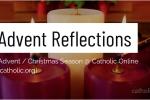 Advent is a period of waiting, like Lent. We are called to obtain the Sacrament of Reconciliation, to pray and fast, as we await the arrival of our ... continue reading
Advent is a period of waiting, like Lent. We are called to obtain the Sacrament of Reconciliation, to pray and fast, as we await the arrival of our ... continue reading
Advent Calendar
Every day of Advent
 An Advent calendar has become a tradition for many families when celebrating Advent and the Christmas season. continue reading
An Advent calendar has become a tradition for many families when celebrating Advent and the Christmas season. continue reading
Advent Candle
24 Days of December
 An Advent candle is a neat way to mark off the days until Christmas. Such candles are commonly found in churches and sometimes in homes. continue reading
An Advent candle is a neat way to mark off the days until Christmas. Such candles are commonly found in churches and sometimes in homes. continue reading
Advent Wreath
Each Sunday of Advent
 The wreath's symbolism of the advent (coming) of Light into the world is clear. The gradual lighting of the four candles, one on each Sunday of the ... continue reading
The wreath's symbolism of the advent (coming) of Light into the world is clear. The gradual lighting of the four candles, one on each Sunday of the ... continue reading
Advent & Christmas Classes
14 Free Classes - Mobile Friendly
 You’re joining our global classroom. Thousands of students from all over the world, each with their own unique story, learn at their own pace on ... continue reading
You’re joining our global classroom. Thousands of students from all over the world, each with their own unique story, learn at their own pace on ... continue reading
Advent & Christmas PDFs
FREE - Printable - Catholic
 Free Advent & Christmas PDFs for anyone, anywhere; Use in your Parish Church - School - Bulletin Inserts. continue reading
Free Advent & Christmas PDFs for anyone, anywhere; Use in your Parish Church - School - Bulletin Inserts. continue reading
Christmas Gifts
Free Shipping $70+
 Make This Christmas Special with Gifts from Catholic Online Shopping. continue reading
Make This Christmas Special with Gifts from Catholic Online Shopping. continue reading
Nativity Scene
Holy Family
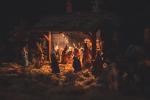 The Nativity Scene is a meaningful expression for our religious faith. With it, we provide a captivating visual focus during the Christmas season. continue reading
The Nativity Scene is a meaningful expression for our religious faith. With it, we provide a captivating visual focus during the Christmas season. continue reading
St. Nicholas
December 6th
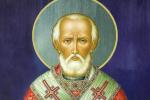 The true story of Santa Claus begins with Saint Nicholas. continue reading
The true story of Santa Claus begins with Saint Nicholas. continue reading
Advent? What is it all about
 The word Advent derives from the Latin word meaning coming. The Lord is coming. We may reflect that every year at this time we celebrate his coming... continue reading
The word Advent derives from the Latin word meaning coming. The Lord is coming. We may reflect that every year at this time we celebrate his coming... continue readingThe Christmas Story
 To become the mother of the Savior, Mary "was enriched by God with gifts appropriate to such a role." The angel Gabriel at the moment of... continue reading
To become the mother of the Savior, Mary "was enriched by God with gifts appropriate to such a role." The angel Gabriel at the moment of... continue readingAdvent Daily Readings
 The weeks of Advent remind us to set aside some of the hectic business of the holiday season, and to quietly reflect on the promise of the baby... continue reading
The weeks of Advent remind us to set aside some of the hectic business of the holiday season, and to quietly reflect on the promise of the baby... continue readingMore Advent & Christmas
ADVENT: A rehearsal for our meeting the Lord
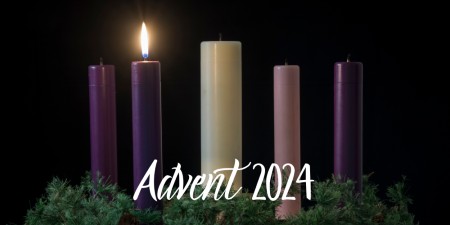
When the Trapp Family Singers came to America it was just before Thanksgiving. Maria Augusta Trapp (Maria in the Sound of Music) noted in ... continue reading
Feast of the Epiphany - A Sunday Letter by Deacon Keith Fournier
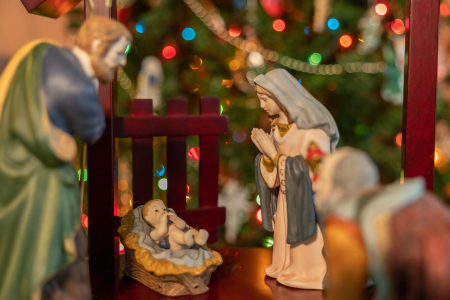
My friends, brothers, and sisters in the Lord,On Sunday January 7, 2024 in the United States and many other Nations, we celebrate the Feast ... continue reading
The Deacon Saint Stephen the Proto-Martyr is a Model for all Christians

In the Catholic Church, Christmas is celebrated for eight days (Octave, from the Latin Octava) and opens up into a wonderful liturgical ... continue reading
Love is Born on Christmas Morn, and the World is Born Anew Watch
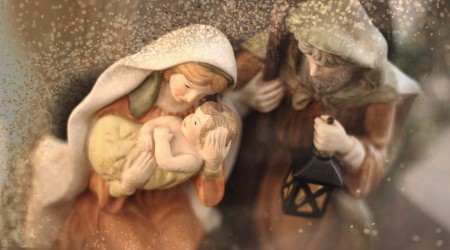
The Gospel passages proclaimed at the Vigil and the Midnight Mass of Christmas root the Nativity of the Lord, in the family history and ... continue reading
5 Ways to keep Jesus in your Christmas celebrations this year

Christmas is a magical time of year when decorations line the streets, children are suddenly behaving and the Post Office struggles to keep ... continue reading
Advent Reflection - Day 22- The Fourth Sunday of Advent Watch
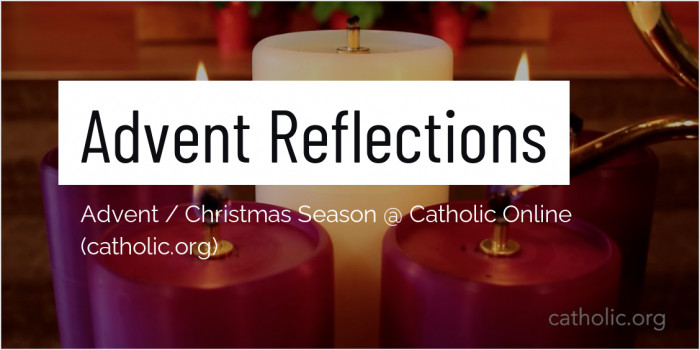
Advent Reflection - Day 22 - The Fourth Sunday of Advent This is the last day of this year's Advent preparations. Tonight, we greet the ... continue reading
Join the Movement
When you sign up below, you don't just join an email list - you're joining an entire movement for Free world class Catholic education.
-

-
Mysteries of the Rosary
-
St. Faustina Kowalska
-
Litany of the Blessed Virgin Mary
-
Saint of the Day for Wednesday, Oct 4th, 2023
-
Popular Saints
-
St. Francis of Assisi
-
Bible
-
Female / Women Saints
-
7 Morning Prayers you need to get your day started with God
-
Litany of the Blessed Virgin Mary
Daily Catholic
 Daily Readings for Wednesday, November 27, 2024
Daily Readings for Wednesday, November 27, 2024 St. James Intercisus: Saint of the Day for Wednesday, November 27, 2024
St. James Intercisus: Saint of the Day for Wednesday, November 27, 2024 Prayer to Saint Anthony of Padua: Prayer of the Day for Wednesday, November 27, 2024
Prayer to Saint Anthony of Padua: Prayer of the Day for Wednesday, November 27, 2024- Daily Readings for Tuesday, November 26, 2024
- St. John Berchmans: Saint of the Day for Tuesday, November 26, 2024
- Act of Entrustment to Mary: Prayer of the Day for Tuesday, November 26, 2024
![]()
Copyright 2024 Catholic Online. All materials contained on this site, whether written, audible or visual are the exclusive property of Catholic Online and are protected under U.S. and International copyright laws, © Copyright 2024 Catholic Online. Any unauthorized use, without prior written consent of Catholic Online is strictly forbidden and prohibited.
Catholic Online is a Project of Your Catholic Voice Foundation, a Not-for-Profit Corporation. Your Catholic Voice Foundation has been granted a recognition of tax exemption under Section 501(c)(3) of the Internal Revenue Code. Federal Tax Identification Number: 81-0596847. Your gift is tax-deductible as allowed by law.

















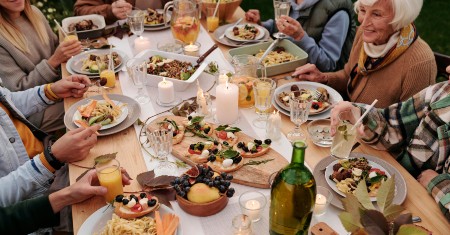
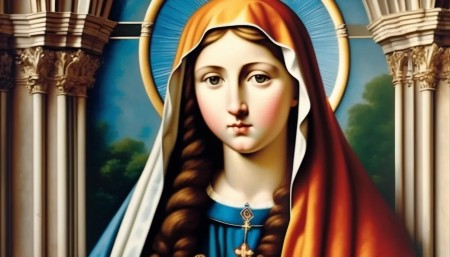
 Daily Readings for Wednesday, November 27, 2024
Daily Readings for Wednesday, November 27, 2024 St. James Intercisus: Saint of the Day for Wednesday, November 27, 2024
St. James Intercisus: Saint of the Day for Wednesday, November 27, 2024 Prayer to Saint Anthony of Padua: Prayer of the Day for Wednesday, November 27, 2024
Prayer to Saint Anthony of Padua: Prayer of the Day for Wednesday, November 27, 2024

